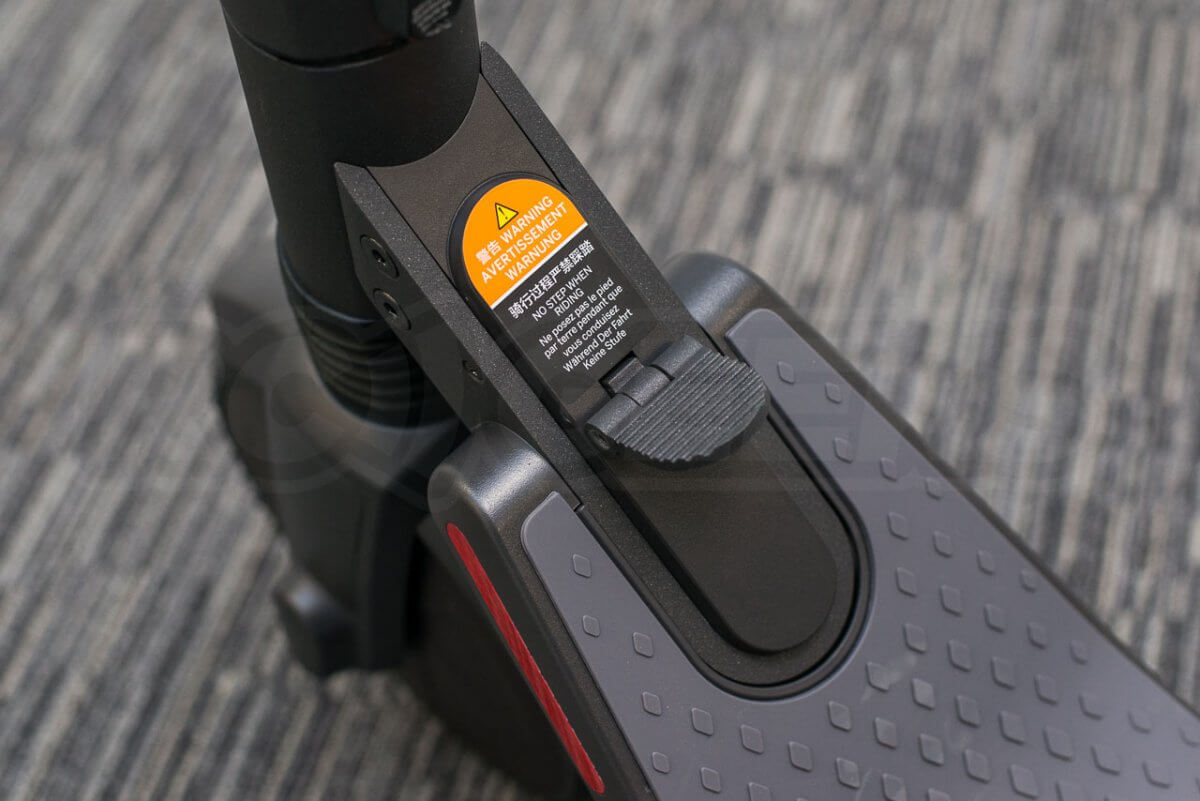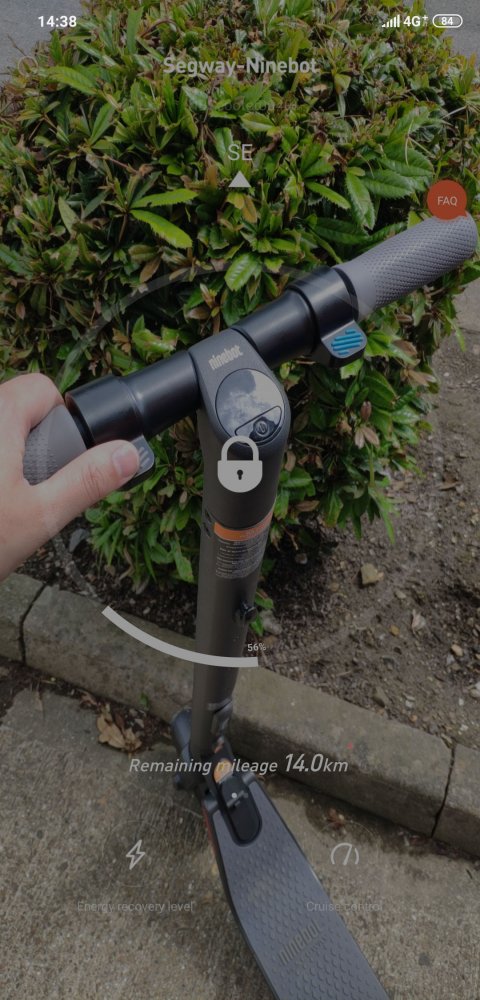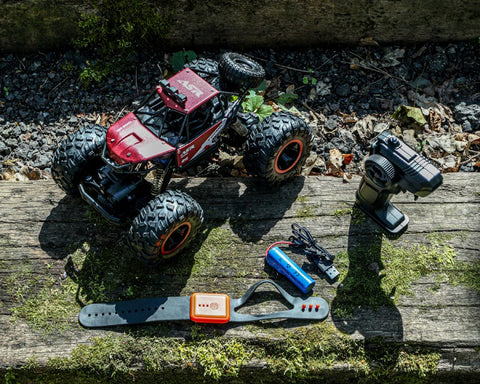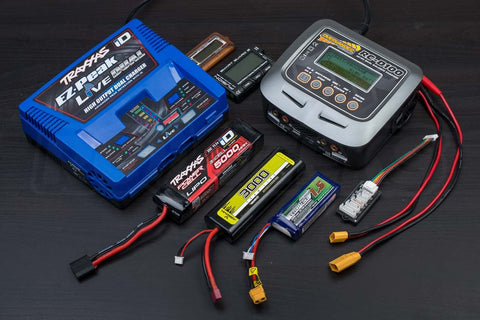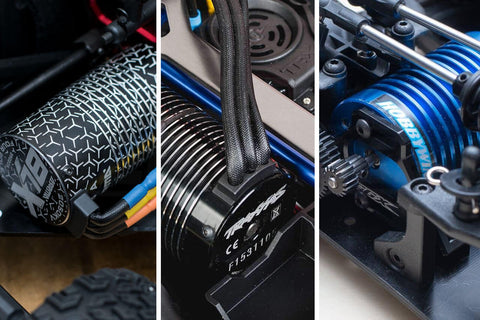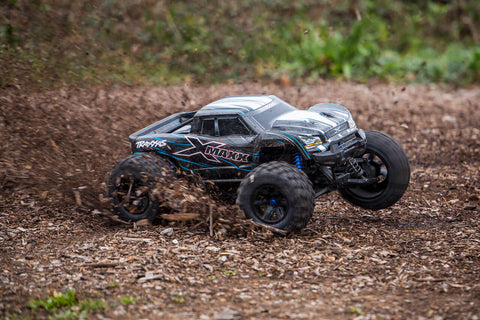The electric scooter market has been hotting up in the last year as adoption of the transportation increases worldwide. Ninebot, now produce the ES2 electric scooter, a followup to their very successful ES1. Mixing clean design, solid tyres, suspension and modular battery expansion with Segway technology, it promises to be a great scooter. We unbox it, take it for a spin and compare it to the current king of electric scooters, the Xiaomi M365.
The ES2 Scooter at a glance
- 15 mph (25kph) top speed
- 15 mile (25km) range and charged in just 3.5 hours
- Sleek folding design
- 300w front hub motor (700w peak) and a IP54 rating
- Front and rear shock absorbtion
- Optional expansion battery pack available to extend both range and top speed
- 100kg max rider weight and 3'11" minimum rider height
- Unfolded it measures 102cm tall, 43cm wide (bars) and 113cm long, whilst weighing just 12.5kg

Unboxing and constructing the Scooter
The Ninebot ES2 arrives in slimline white retail packaging, a departure from the boring brown cardboard containers of the competition.
Included in the box is the main frame, handlebar, 5x flathead screws (one spare, a nice touch) a hex wrench, battery charger with UK adaptor, user manual, quick start guide and warranty information.

Putting the scooter together is really straightforward. Extend the kickstand to steady the main frame and remove the large plastic plug from the top of the stem. Connect the power cable inside into the handlebar plug and slot the handlebars in. Insert the bolts (not forgetting the rubber washers) into two holes front and back and hand-tighten with the included M4 hex wrench.
To power up the scooter press the power button below the glossy black dashboard centrally mounted to the handlebars.
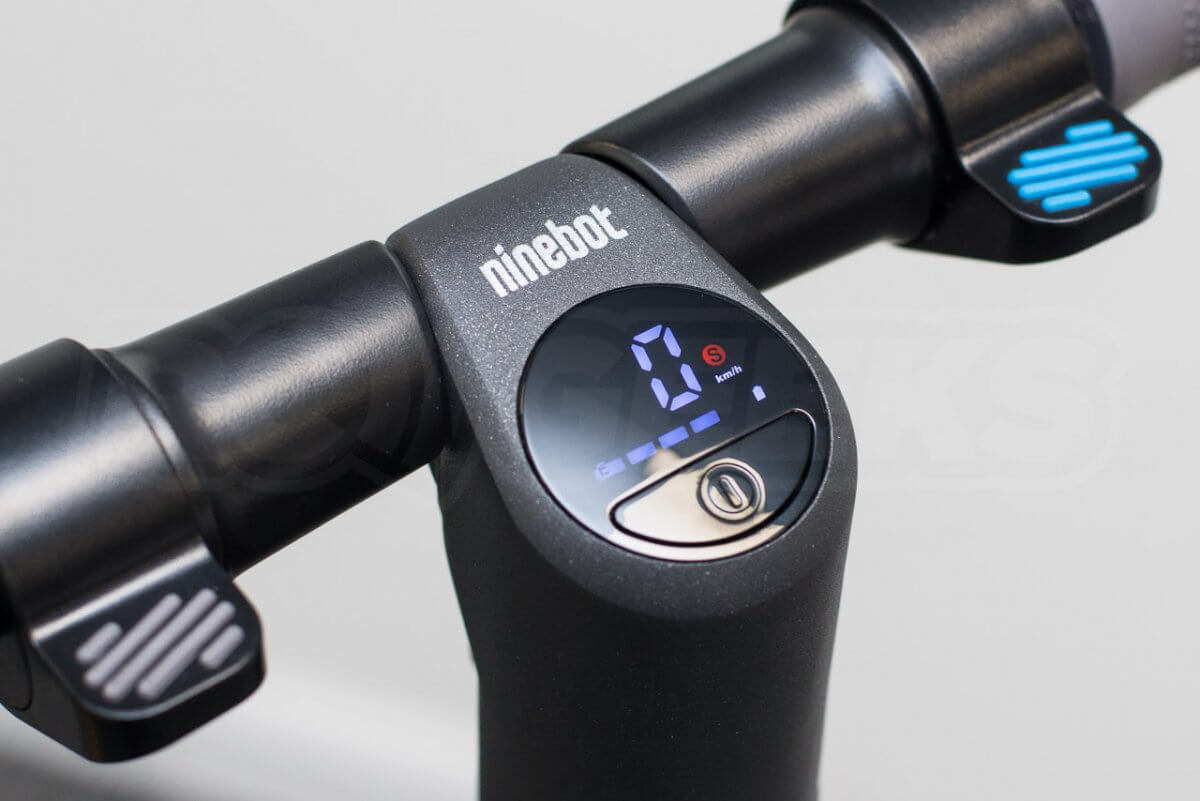
Next you will nee to activate your scooter using the smartphone app. If you don't do this it will beep at you at power on the top speed will be limited. The app is available on both Android as well as iOS and is nicely designed (once you have got past the registration screen).
Clean industrial design
Yes, beauty is in the eye of the beholder, but this is by far the best looking scooter that we currently offer. Its a sleek, cohesive design, oozing a level of quality that the competitors fail to match. Lots of work has gone into ensuring the scooters has a minimalist feel, with only one wire visible, poking out aside the hinge.
Something that is difficult to portray in just photos is the build quality of this scooter. It truly feels like a premium product, something that even some higher-priced scooters fall short on.
Battery size and charge time
Using the included charger the scooter will take just 3.5 hours to charge the standard pack from flat. This is pretty quick but due to its below-average 5200 mAh capacity. When charging the display will helpfully display the current battery capacity percentage.

The battery is located in the stem, raising the centre of gravity when riding but resulting in a thin deck and a more balanced weight-distribution when carrying the scooter around.

This is also why the charger port is found on the stem behind a rubber plug. The included charger will accept 100-240 VAC, ideal for use worldwide and is small and light enough to carry in even a smallest of backpacks.

Compact, folding design
The folding hinge is located at the front of the deck instead of on the upright steerer tube. This is great for steering feel, reducing the flex down the handlebars and also negates the use of a kickstand when folded since the base ends up securely on the floor.

Its a novel collapsing mechanism, requiring you to flip down a latch and then kick down on it to fold the scooter down.
Once collapsed the hook on the stem doubles up as a catch for the rear fender, clicking into place. To release it just push down the rear of the fender with your hand or toe and lift the handlebars back up until you hear a click.
The rubber mounting receiver for the optional battery makes for a natural hand-hold, allowing you to grip the smooth steerer tube and comfortably carry the scooter close to your body.

The comfort continues with a nice wide rubber textured footplate (circa 15cm) that has around 50cm of usable length, leaving more space for bigger feet/shoes.
Clean, simple cockpit and dashboard
The handebars measure 43cm wide and are 110cm from the ground, a comfortable setup for even taller, broader riders. There are two rotating levers positioned inboard from the soft-rubber grips. On the right, with the blue marking is the accelerator and on the left is the grey marked brake lever.
A single power button sits below the LED display ontop of the stem. The display has readouts for speed (with units) battery capacity (in 5 chunks) and drive mode (more on this later).
Dual brakes
The Ninebot claims to have dual 'brakes'. The first is engaged by pressing down on the grey lever which uses the motor to slow down the scooter. Using just this brake (even in the most aggressive regenerating/braking mode) you can expect to pull the scooter up in a disappointing 8.7m.
The secondary brake is the friction-on-the-rear-tyre type. You stamp on the rear mudguard slowing the hard-compound rear tyre down. In our tests with a 60kg rider it shortened the stopping distance to around 5m.
Suspension front and rear
Where the ES2 shines is its suspension. It offers fantastic ride quality on hard surfaces, soaking up bumps. With practice you can even pre-load the suspension and bunnyhop drain covers or cracks in the pavement.
Upfront, just above the fork is a small rubber-bellows covered damper. This takes some of the vibrations out of riding and can save your wrists should you hit a pothole you hadn't anticipated.
At the rear is a much more complex swing-arm style setup with a single damper mounted in-board under the deck. This does most of the work when it comes to reducing through-the-feet bangs and vibrations.
Above you can see the two systems at full compression. Naturally with limited travel, the suspension will bottom out if pushed too far, such as hitting big jumps as shown below (don't try this at home).
This system makes for a really nice ride and when ridden on firm surfaces surfaces potentially one of the most comfortable scooters we've tested to date.
Solid tyres
If you have experienced a puncture on an electric scooter, you will know how much of a pain it can be to remedy. The solid tyres on the ES2 have proved a big selling point to those of you who seem to spend all their time riding through broken glass. Mounted to an 8 inch rim at the front and a 7.5 inch rim at the rear, the hard rubber tyres aren't going to 'let you down' like other inflated solution might.

However the thin profile means they offer very little in terms of ride comfort, making you all the more thankful for that trick suspension setup. The wheels are covered front and rear by mudguards making it safe to ride on damp streets, but the hard-compound doesn't offer fantastic grip in the wet. With an IP54 rating we'd advise submerging the scooter in any serious puddles.
Powerful 300w front hub motor
Like other manufacturers, Ninebot designed the ES2 to be front-wheel drive. The 300w hub motor has a peak power of 700w and is more than capable of spinning that hard-rubber tyre that surrounds it, should you 'give it death' on a damp surface.
The scooter has a top speed of 15.5mph (25km/h) and we found it took nearly 8 seconds to hit it, with an average sized rider. If you are finding the scooter performance underwhelming, check the screen or app for what power mode you are in.

The readout screen will indicate what drive mode you are in. A red circle with an 'S' in the centre denotes the 'Sport' mode for maximum power/speed at the cost of reduced range. A white circle with an 'S' is standard mode and no 'S' indicates that you are in limited mode with minimal power output and speed potential but greatly increased range.
Lights, lights and more lights
A powerful LED headlight is positioned on the stem just under the handlebars and is useful at night for being seen, if not great for illuminating the way ahead. As mentioned the swing-arm features brake lights that shine as you slow down, however their questionable positioning on the side makes them of little use to anyone following.
As with other Segway-Ninebot devices, the ES2 features a whole load of adjustable lighting options for the under-deck LED's. They can cycle a rainbow or flash different colours but we preferred to just turn them off.
Polished smartphone companion application
Available for Android as well as iOS the Ninebot app is simple to use. It allows adjustment of energy recovery level, cruise control toggle, lighting and much more. It also features instructions and tips for for new users.
The app allows you to switch the background of the dashboard 'speed' view to a live feed from your camera, thus enabling a 'HUD' style view, ensuring you can still see where you are going when checking your speed or battery level in use.
Note that we have the scooter 'locked' in the last screenshot, this engages the front motor-brake and will bleep when you try and push it along.
Riding the scooter
We really enjoyed riding the ES2. The majority of our scooter journeys are on hard paths and on those it was comfortable and smooth to ride, only jittering on cobbled surfaces. The power delivery was smooth and although we used cruise control for longer journeys, the resistance on the throttle was never fatiguing in extended use.
It was comfortable to carry up stairs and felt svelte when loading in and out of the car, whereas other scooters have felt cumbersome. The simplicity of the folding mechanism is a refreshing alternative to the fiddly M365, only requiring you to bend down when finally locking the stem to the rear fender.
Our range achievements fell short of the manufacturers claims but due to our style of use this has become the norm rather than the exception on all scooters. The main issue any of us had with the scooter was with the brakes. Those coming from the reliable, mechanical rear disc setup on the M365 found the brakes lacked confidence, especially when rolling along at top speed.
Should I buy this electric scooter?
The Ninebot ES2 mixes a comfortable, stable ride with excellent build quality. If you want to ride along glass/nail filled routes then the airless tyres will be perfect for you, although we felt they offered less grip than the soft, pneumatic ones found on competitors. The dashboard showing your charge level and speed is welcome and the companion app is well polished and reliable in use.

We failed to match the Ninebot's claimed 25km (15.5miles) range, instead only managing a little over half that (admittedly in the highest power mode); however these figures are no more inflated than those offered by other manufacturers. They can also be addressed by adding an optional battery pack to the stem (more on this in a future article) to reportedly increase the range by 40% and raise the top speed too.
The lack of true mechanical disc means the braking performance isn't up to that of the competition, keep this in mind if your riding is likely to require frequent emergency stops.

If you are on the heavier end of the spectrum or looking for a scooter that will go as far as possible, consider the M365 Pro edition instead.
Where can I buy the Ninebot ES2?
You can buy the Ninebot ES2 is available on our webstore. It includes free next-working-day delivery to UK addresses so order now and it could be with you tomorrow!

RC Geeks, Electric Personal Transport Nerds
We love all these electric transport models and have reviewed several others. Check our original review on the Xiaomi M365 electric scooter, the QiCycle folding e-bike, the Ninebot Mini and our recent review on the Ninebot Mini GoKart kit.
For other Ninebot products check the manufacturer page on our webstore.
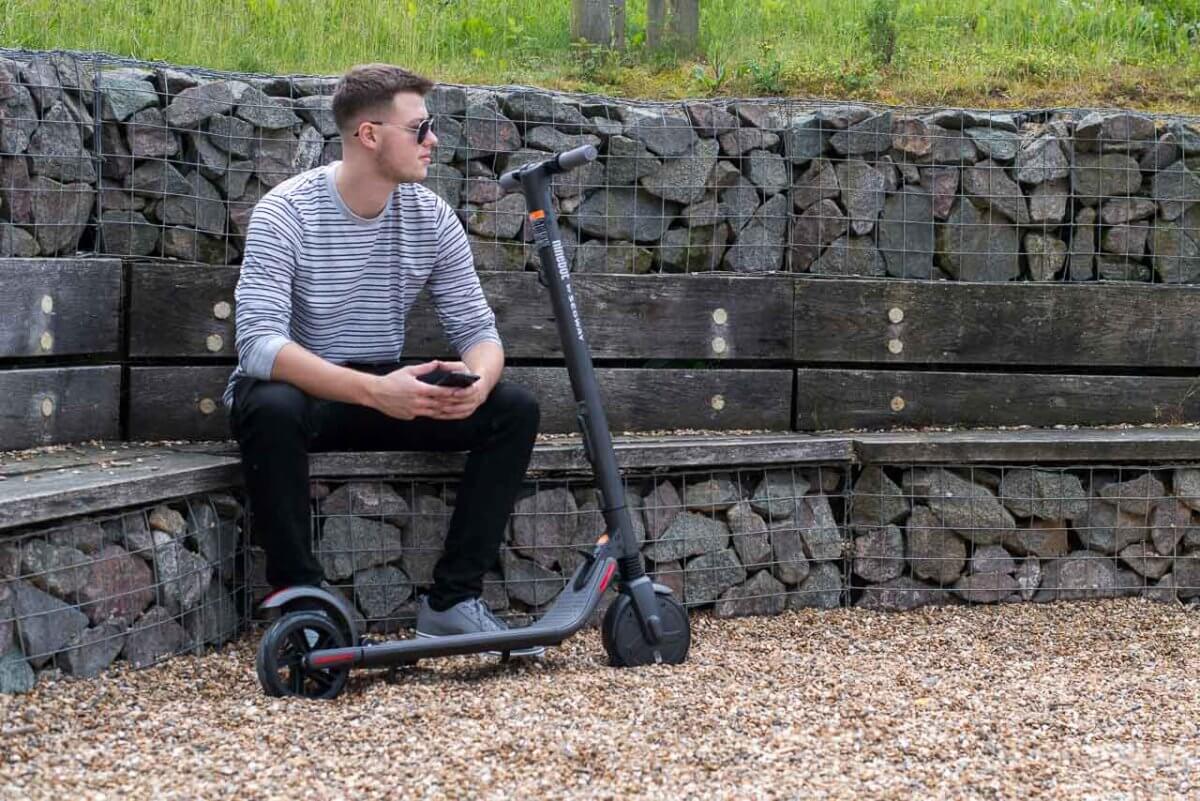
Do you have any questions about the ES2? Is there a scooter you'd like to see us review? Leave us a comment in the section below!




